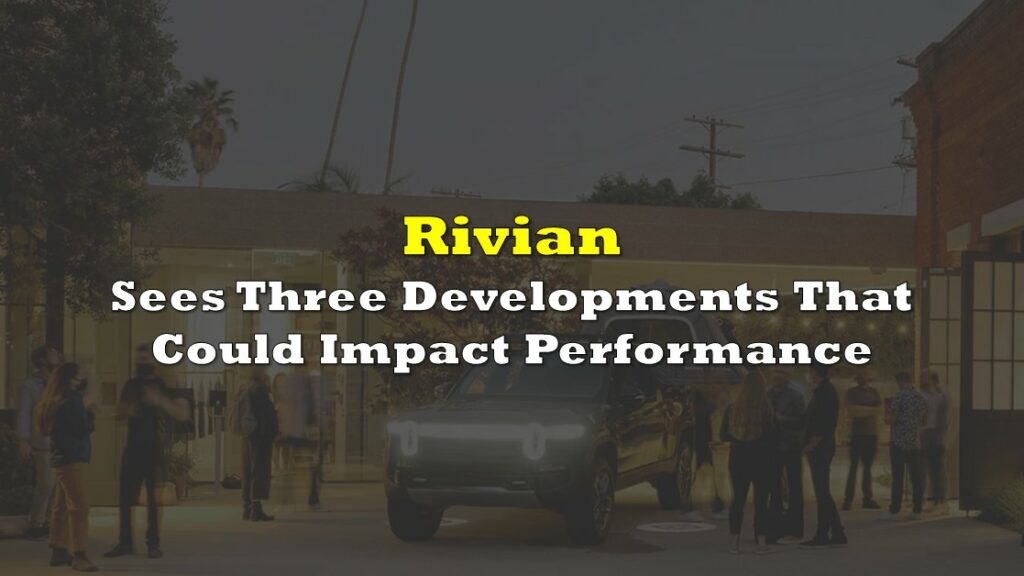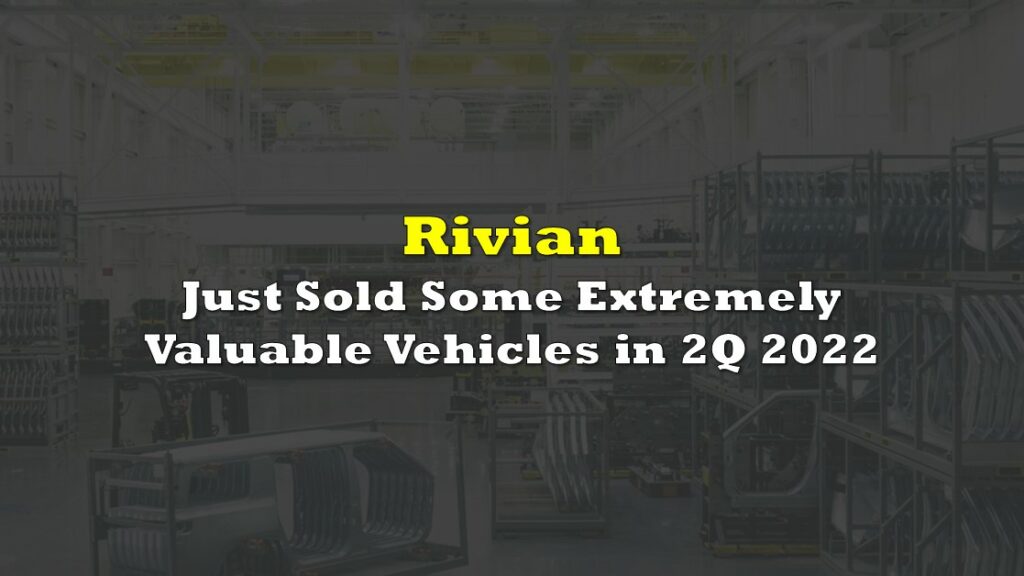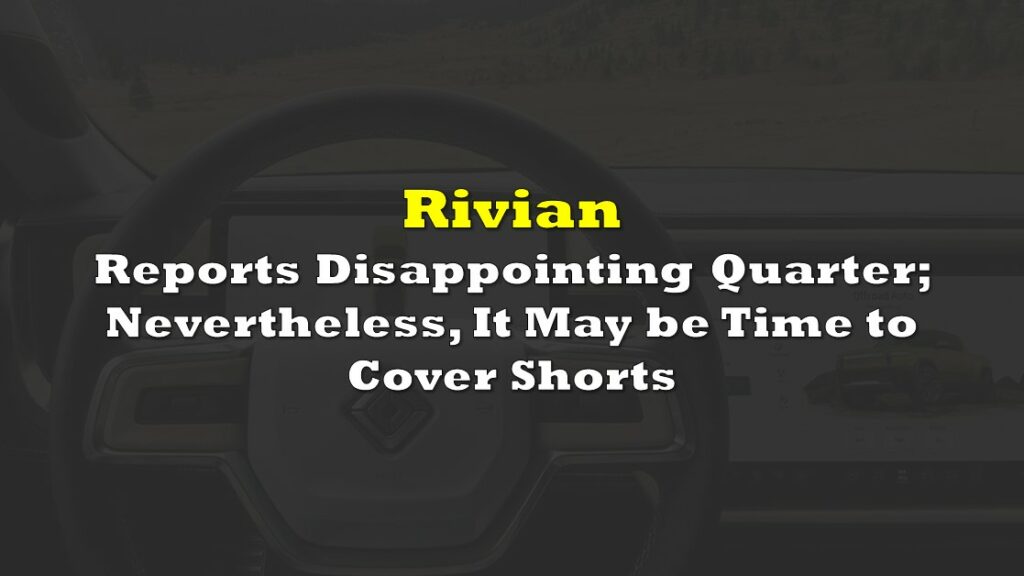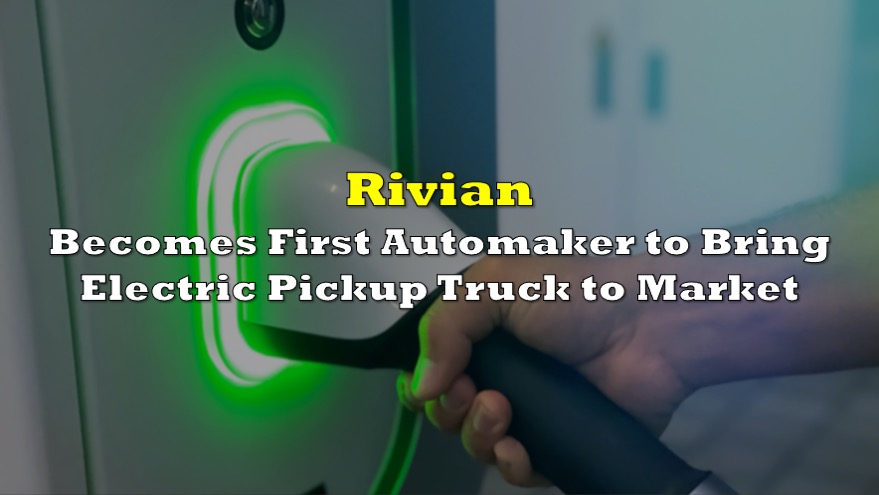On July 26, the start-up electric vehicle (EV) maker Rivian Automotive, Inc. (NASDAQ: RIVN) laid off about 6% of its total workforce of 14,000, equivalent to around 800 workers. In an email to employees, Rivian’s CEO R.J. Scaring cited rapid changes to the world economy that necessitate actions to “support our sustainable growth as we ramp toward profitability,” as the chief reason for the headcount reduction.
Similar to the composition of Tesla Inc.’s (NASDAQ: TSLA) previously announced employee cuts, Rivian’s layoffs appear to be concentrated in salaried employees. Media reports say no cuts are planned among Rivian’s 5,000-strong manufacturing workforce at its Illinois manufacturing plant.
As an aside, Rivian is providing generous benefits to laid off employees. They are each said to receive 14 weeks of severance pay and paid health coverage through year-end 2022.
Typically, a company’s announcing a major employee reduction implies subpar earnings results in the most recent earnings period. That very well may be the case for Rivian’s 2Q 2022 (scheduled to be reported August 11). Indeed, the company reported a whopping US$1.114 EBITDA loss in 1Q 2022.
However, investors will likely pay more attention to Rivian’s comments regarding full-year 2022 and potentially 2023 vehicle production volumes discussed in the 2Q 2022 earnings release and conference call than to the magnitude of the company’s cash flow deficit in the quarter. On July 6, Rivian reiterated that it is on track to reach its goal of producing 25,000 vehicles for the full-year 2022.
Rivian produced 6,954 units in the first half of 2022, meaning that to meet its full-year 2022 target, the EV maker would have to produce just over 18,000 units in the second half of the year, or 160% more than in the first half. Phrased differently, Rivian will have to manufacture just under 700 vehicles per week in 2H 2022 to reach its 25,000-unit goal for 2022. This would represent about a 74% increase from its rate over the period May 10 through June 30.
| Total Vehicles Produced | Weekly Rate | |
| January 1 through March 8 | 1,410 | 147 |
| March 9 through March 31 | 1,143 | 348 |
| April 1 through May 9 | 1,435 | 258 |
| May 10 through June 30 | 2,966 | 399 |
| 1H 2022 | 6,954 | 267 |
| 2H 2022 Goal | 18,046 | 694 |
| Full Year 2022 Goal | 25,000 | 481 |
Separately, the provisions contained in the Schumer-Manchin U.S. reconciliation bill, which was announced on July 27, are generally constructive for the EV industry. Most importantly, the bill maintains the current US$7,500 tax credit for new EV purchases.
However, EV credits beginning in 2023 would be limited to trucks, vans and SUVs with suggested retail prices of US$80,000 or less. The base prices of Rivian’s R1T truck and R1S SUV models equipped with quad-motor systems are about US$79,000 and UDS$84,000, respectively. As a result, prospective buyers of models may not be eligible for a tax credit which would offset ~10% of the vehicle’s purchase price.
In addition, the Schumer-Manchin compromise specifies the new EV tax credit will be conditioned on increasing annual domestic sourcing requirements for critical metals used in batteries, like lithium and cobalt. So, Rivian would need to be mindful of where it purchases these unique metals for its customers to qualify for the new EV tax credit.
From a longer-term perspective, Rivian remains a challenging stock to value. Despite the recent rally the shares are down more than 80% from its November 2021 high, and after factoring in its US$14.8 billion net cash position, Rivian’s enterprise value is still about US$15 billion. When compared against its projected 2022 adjusted EBITDA of negative US$4.75 billion, the valuation judgment is difficult.
Rivian Automotive, Inc. last traded at US$34.30 on the NASDAQ.
Information for this briefing was found via Edgar, Bloomberg, and the companies mentioned. The author has no securities or affiliations related to this organization. Not a recommendation to buy or sell. Always do additional research and consult a professional before purchasing a security. The author holds no licenses.









